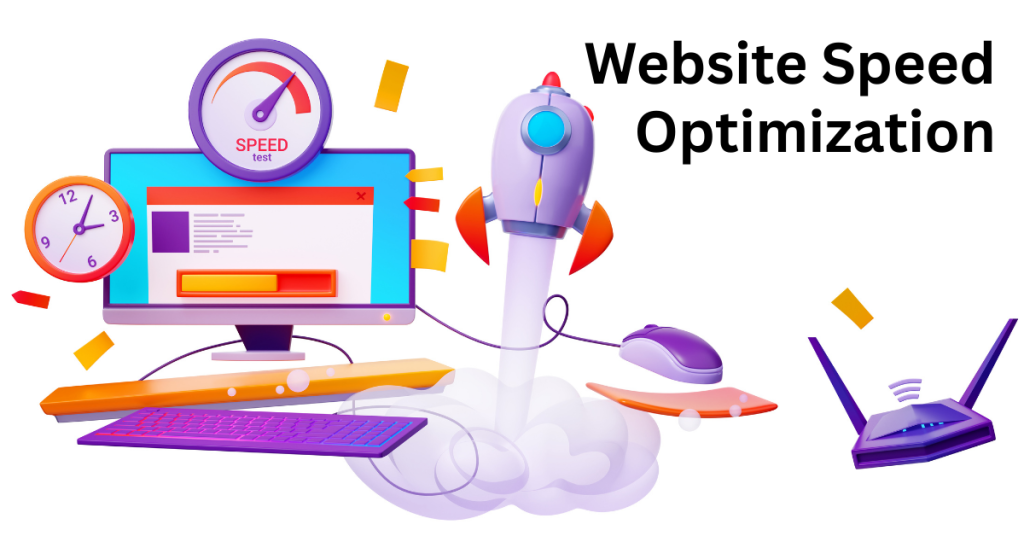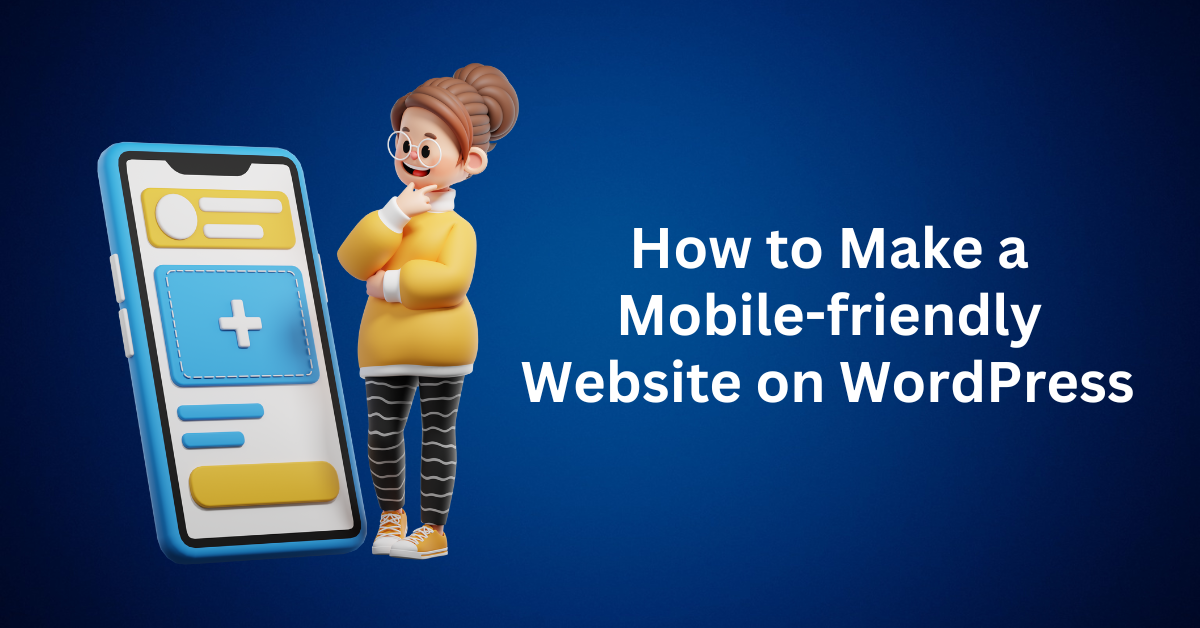If your website takes more than a few seconds to load, you could be losing visitors and potential sales before they even see what you offer. A slow website doesn’t just frustrate users; it also hurts your SEO ranking and conversion rate. Hence, website speed is important for your site’s performance.
The truth is, even a one-second delay can make a noticeable difference. According to Google, websites that load within three seconds are far more likely to keep visitors engaged and encourage them to take action.
So, if you’ve ever caught yourself wondering “Why is my website so slow?”, this guide will walk you through practical, beginner-friendly fixes to speed things up, no coding expertise required.

Table of Contents
ToggleWhy Website Speed Matters More Than You Think
Your website’s loading speed directly impacts how people perceive your brand. A fast, seamless experience tells visitors you’re professional and reliable. A sluggish site, on the other hand, can make even a great product look untrustworthy.
Slow load times also affect your search engine visibility. Google’s algorithm uses Core Web Vitals such as loading time, interactivity, and visual stability to determine how your site ranks. In other words, improving your site speed isn’t just about user experience; it’s a vital part of your SEO strategy.
How to Know If Your Website Is Actually Slow
Many website owners assume their site is fast because it loads quickly on their own device. But what you see isn’t always what your visitors experience.
That’s because your browser stores cached files like images, CSS, and JavaScript after your first visit. When you revisit your site, it pulls those files locally instead of from the web server, making it appear faster.
To understand your real website performance, you need to test it as if you were a first-time visitor. That’s where website speed testing tools come in. These tools simulate real-world conditions to show how your site performs globally and identify what’s slowing it down.
Key Metrics to Pay Attention To
When you run a speed test, you’ll come across three essential metrics known as Core Web Vitals:
- Largest Contentful Paint (LCP): Measures how long it takes for the main content to load on the screen. Aim for under 2.5 seconds.
- First Input Delay (FID): Tracks how quickly your site responds when users interact (e.g., click a button).
- Cumulative Layout Shift (CLS): Measures how stable your page layout is while loading; lower scores mean fewer unexpected shifts.
Top Tools to Test and Optimize Your Website Speed
Here are four trusted tools that help you identify speed issues and optimize your site for peak performance:
1. Pingdom
Pingdom is ideal for continuous performance monitoring. It tests your site from multiple global locations and provides detailed insights into requests, response times, and file sizes. The visual reports make it easy to pinpoint slow-loading pages and fix them quickly.
2. YSlow
Created for developers but useful for anyone serious about optimization, YSlow analyzes your site’s structure, including HTML, CSS, and JavaScript to find bottlenecks. It also provides actionable recommendations to reduce page weight and improve overall speed.
3. GTmetrix
GTmetrix combines data from Google Lighthouse and YSlow to deliver an in-depth report of your website’s performance. It breaks down each component from images to scripts and shows exactly which elements are causing delays, helping you fine-tune your site for smoother browsing.
4. Google PageSpeed Insights
A must-have for every website owner, Google PageSpeed Insights evaluates both mobile and desktop performance. It measures critical Web Vitals and offers tailored suggestions, like compressing images, deferring unused JavaScript, and optimizing your server response time.
What Causes a Slow Website (and 5 Proven Ways to Fix It)
A slow website doesn’t just test your visitors’ patience. It can cost you traffic, leads, and sales. Studies show that most users abandon a website if it takes more than three seconds to load. In today’s fast-paced digital world, every second counts.
If your website is sluggish, it’s not always because of one issue. Several hidden factors, from hosting limitations to unoptimized images, can dramatically reduce your website’s speed and performance.
Let’s break down the five most common reasons your website might be slow and the actionable steps you can take to fix them right now.
1. You’re Using a Shared Hosting Plan
Shared hosting might be affordable, but it often comes with a performance trade-off. When your website is hosted on a shared server, you’re sharing critical resources like CPU, RAM, and bandwidth with dozens (or even hundreds) of other websites.

That means when one of those sites experiences a traffic surge, it can slow down every other website on the same server, including yours. As your own traffic grows, you’ll notice slower response times, delayed page loads, and occasional downtime.
How to Fix It: Upgrade Your Hosting and Use a CDN
If you’ve outgrown shared hosting, it’s time to switch to a dedicated hosting plan or a high-performance VPS. With Bluehost Dedicated Hosting, all resources, including CPU power and memory, are reserved exclusively for your site. This ensures consistent speed, improved stability, and stronger security even during high-traffic periods.
To further enhance performance, integrate a Content Delivery Network (CDN) such as Bluehost SiteLock CDN. CDNs store static files (like images, JavaScript, and CSS) on multiple servers worldwide. When a user visits your site, those files are delivered from the server closest to them, drastically reducing load time and improving global access speed.
2. Your Website Isn’t Using Page Caching
If your website takes too long to load even after optimizing your content, caching might be the missing piece. Without caching, your server must reload and reprocess every web page request, including images, CSS, and JavaScript, each time a user visits.
This repetitive process increases server load and delays your page rendering speed.
How to Fix It: Enable Page Caching
When caching is enabled, your server temporarily stores frequently requested data (like web pages or assets) in memory. The next time a visitor lands on your site, your browser loads those cached files directly, cutting down server requests and dramatically speeding up load time.
For WordPress sites, caching plugins like WP Rocket or W3 Total Cache make this easy. With just a few clicks, your website can go from sluggish to lightning-fast, improving both your user experience and SEO ranking.
3. Your Images Are Too Large or Unoptimized
Images play a huge role in user engagement and design, but they’re also one of the most common culprits of slow websites. High-resolution images can quickly bloat your pages, causing longer loading times, especially on mobile devices.
How to Fix It: Compress and Optimize Images
Start by analyzing image performance with tools like Pingdom Website Speed Test. It shows you exactly how much images contribute to your overall page load time.
Next, compress and resize your images before uploading them. You can use WordPress plugins such as Smush or ShortPixel to automatically reduce image file sizes without sacrificing visual quality.
When choosing file formats, follow these best practices:
- JPEG for photos (smaller file size, ideal for galleries or lifestyle images).
- PNG for logos or graphics with transparency.
- WebP, a next-gen format supported by most browsers, for optimal compression and quality balance.
Also, avoid uploading images larger than necessary. Cropping and resizing images to exact dimensions can shave seconds off your load time.
4. You Have Too Many (or Poorly Coded) Plugins
Plugins are essential for adding functionality, but overusing them can backfire. Each plugin adds its own scripts, styles, and database queries, and if they’re poorly coded or outdated, they can slow your entire website down.
How to Fix It: Audit and Optimize Your Plugins
Start by reviewing all installed plugins and ask:
- Do I really need this plugin?
- Does it duplicate functionality that another plugin already provides?
- When was it last updated?
Remove any that are unnecessary or incompatible with the latest version of your CMS (like WordPress). Run a performance scan using tools like GTmetrix to identify which plugins are consuming the most resources.
Stick to lightweight, reputable plugins with regular updates and strong user reviews. Maintaining a clean, minimal plugin setup can dramatically improve site speed and reduce conflicts between scripts.
5. Your JavaScript and CSS Files Aren’t Optimized
Every website relies on JavaScript and CSS for design and functionality. However, when these files multiply unchecked or remain uncompressed, they can cause excessive HTTP requests. This makes your browser work harder to load each resource individually, slowing down your entire website.
How to Fix It: Minify and Combine Files
The solution is minification. A process that removes unnecessary characters, spaces, and code from your CSS and JavaScript files without affecting functionality. This reduces file size and accelerates load time.
Use tools or plugins like W3 Total Cache or Autoptimize to automatically:
- Combine multiple CSS and JavaScript files into one.
- Eliminate redundant white spaces, semicolons, and line breaks.
- Defer loading of scripts until after the page has rendered.
For advanced optimization, use sprite sheets to combine multiple small images into a single file, cutting down the number of HTTP requests even further.
Final Thoughts: Fast Websites Win Every Time
A slow website doesn’t just frustrate visitors. It quietly drains your traffic, trust, and revenue. If you’ve ever wondered, “Why is my website slow?”, now you know it’s not an unfixable problem. With the right approach, you can turn sluggish performance into smooth, lightning-fast browsing.
Even small tweaks like optimizing images, cleaning up code, or upgrading your hosting can have an immediate impact. Every second you shave off your page load time helps improve engagement, lower bounce rates, and increase conversions.
But remember: website optimization isn’t a one-time task. “Set it and forget it” doesn’t work.
Test every change using the same URL, monitor your Core Web Vitals, and track how your site performs across different devices. True progress comes from measuring results, not making assumptions.
And if the technical side feels overwhelming, you don’t have to handle it all yourself. Professional hosting providers can help you automate the heavy lifting so you can focus on what matters most: growing your business.
With Bluehost’s performance-optimized hosting plans, you’ll have access to built-in caching, CDN integration, and managed speed tools that keep your site fast, stable, and secure, all with minimal manual effort.
Start today, optimize consistently, and you’ll turn website speed into a lasting competitive advantage that fuels long-term success.
👉 Get started with Bluehost and experience faster, more reliable performance today.







